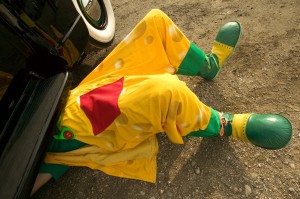Even with the national car insurance average at its lowest rate in over a year, insuring a vehicle is substantially more expensive nowadays than ever before. With the economic pinch taking its toll on job-seeking Americans and struggling families, the question of insurance costs is often highlighted. Car owners who think that auto insurance is unnecessary often pay for their assumptions dearly when they get in car accidents that drain their financial and personal assets.
 Despite the risk of losing thousands of dollars for car repairs and personal assets, a growing number of motorists are dropping their insurance policies to save money. In fact, insurance research bodies estimate that around 14 percent of all drivers on the nation’s roads and highways currently do not have any insurance. Some states like New Mexico report figures above the 20 percent mark. California expects that one out of every five of its drivers will be uninsured by early next year. Experts say that this trend follows the substantial job losses and unemployment rates across the U.S.
Despite the risk of losing thousands of dollars for car repairs and personal assets, a growing number of motorists are dropping their insurance policies to save money. In fact, insurance research bodies estimate that around 14 percent of all drivers on the nation’s roads and highways currently do not have any insurance. Some states like New Mexico report figures above the 20 percent mark. California expects that one out of every five of its drivers will be uninsured by early next year. Experts say that this trend follows the substantial job losses and unemployment rates across the U.S.
Industry sources, however, say that drivers can save large amounts of money on insurance by simply keeping their vehicles well maintained. Most insurance companies determine rates and premiums based on the kind of vehicles owned by a policyholder. They also consider the car’s state and condition in coming up with rates. Typically, vehicles with good upkeep records are considered to be much safer and thus, less costly to insure. Cars that are in good working conditions are also less prone to cause accidents, reducing the risk of liabilities for policyholders.
According to experts, car owners should regularly check their vehicles’ engines, electrical, brakes, suspensions, and tires. The engine oil should be changed every 3,000 miles to ensure that the engine performs well. Brake pads and brake fluids must also be monitored regularly to prevent any accidents while cruising along. Even power steering and transmission fluids should be constantly checked to prevent any problems with steering and shifting gears. Of course, the car’s tires and suspension systems must also be kept in good condition at all times because they take most of the abuse. The car’s headlights, brake lights, and turning signals must be checked on a regular basis to minimize the risk of accidents at night.
Car owners can also go the extra mile and install safety devices like side airbags, automatic seatbelts, and anti-lock brakes. These additional options can create the image of a safe and responsible driver, possibly convincing insurance providers to lower premiums substantially.


